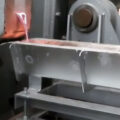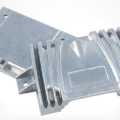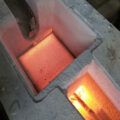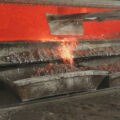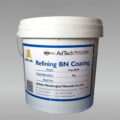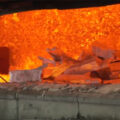Aluminium Sand Casting is a casting method in which casting sand and core sand are used as molding materials, and liquid metal is filled under gravity to produce the casting. Aluminum, iron, and most non-ferrous alloy castings can be obtained by sand casting.
Because the molding materials used in sand casting are cheap and easy to obtain, the casting mold is easy to manufacture, and can adapt to the single-piece production, batch production, and mass production of castings. For a long time, it has been the basic process in casting production. The mold used in sand casting is generally composed of the outer sand mold and the core.
Aluminium Sand Casting
In order to improve the surface quality of castings, a layer of paint is often applied on the surface of sand mold and core. The main components of the coating are powder materials and binders with high refractoriness and good chemical stability at high temperatures. In addition, a carrier (water or other solvents) and various additives for easy applications are added. The basic raw materials for making sand molds are foundry sand and sand binder. The most commonly used foundry sand is siliceous sand. When the high-temperature performance of silica sand cannot meet the requirements of use, special sands such as zircon sand, chromite sand, corundum sand, etc. are used.
In order to make the manufactured sand mold and core have a certain strength, it will not be deformed or damaged when handling, closing the mold, and pouring the liquid metal. Generally, the molding sand binder should be added in the casting to bond the loose sand particles into molding sand. The most widely used molding sand binder is clay, and various drying oils or semi-drying oils, water-soluble silicates or phosphates, and various synthetic resins can also be used as molding sand binders.

Aluminium Sand Casting Type
According to the binder used in the sand and the way of establishing strength, the outer sand type used in sand casting is divided into three types: wet clay type, dry clay type, and chemically hardened sand type.
Clay Wet Sand Mold
Clay wet sand molds use clay and an appropriate amount of water as the main binders for molding sand. After making the sand molds, the molds are directly combined and poured in the wet state. Wet casting has a long history and is widely used. The strength of wet sand depends on the clay slurry of clay and water mixed in a certain proportion. Once the molding sand is mixed, it has a certain strength. After the sand is made into a sand mold, it can meet the requirements of molding and pouring. Therefore, the amount of clay and water in the molding sand are very important process factors.
Dry Sand Mold
Dry sand molds for making this type of sand mold have a slightly higher moisture content than the wet mold sand. After the sand mold is made, the surface of the cavity should be coated with refractory paint, and then placed in an oven to dry. After it cools, the mold can be closed and poured. It takes a long time to dry the clay sand mold, which consumes a lot of fuel, and the sand mold is easily deformed during the drying process, which affects the accuracy of the casting. Clay dry sand type is generally used to manufacture cast steel parts and larger cast iron parts. Since chemically hardened sand has been widely adopted, dry sand molds have tended to be eliminated.
Chemically Hardened Sand Mold
The chemically hardened sand mold used in this sand mold is called chemically hardened sand. The binder is generally a substance that can undergo molecular polymerization and become a three-dimensional structure under the action of a hardener. Commonly used are various synthetic resins and water glass. There are basically three methods of chemical hardening: self-hardening, aerosol hardening, and heating hardening.
AdTech offers sealing materials, patching materials for aluminum casting, if you are interested in our products, please feel free to contact us.

